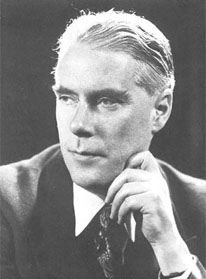Books Do Furnish A Year. A ‘Dance to the Music of Time’ reading challenge for 2013.
This year, some friends and I are planning to read the twelve volume novel sequence, A Dance to the Music of Time.
I am writing this in the fervent hope that you might be persuaded to join us.
You might well ask, why bother with a reading plan, at all? And, more to the point, why Anthony Powell?
I can only answer this for myself. Recently, while reviewing the list of what I read in 2012, I had the feeling that something is missing, something lost. A coherence to the rhythm of the year.
There are times when I can hear a song, or see a film clip, and be transported back not just to where I was when it happened, but also what my main preoccupations were at the time. As though whatever I was ‘reading around’ resurfaces to these unexpected prompts. Aragon. Baudelaire. The Baader-Meinhof Gang. The year of Czech literature in translation. Foreign Bodies. These fixations from my student days when reading was an intense compulsion, have all, unsurprisingly, left enduring fortresses in my inner landscape.
It strikes me that what I need for 2013 isn’t so much a reading list, as a heartfelt theme.
I’ve long been fascinated with the ways in which people make the things they do. Without consciously thinking about it, lately I’ve been amassing a ‘to read’ pile of books about the creative process in everything from literature and the visual arts to dance, and even baking. No need to dig up Dr Freud to work out that 2013 should be my Year of Creativity. Process, expression, engagement, the lot.
What better year then, to finally engage with Powell’s Dance? Not only is it a giant of 20th Century Literature but, as Tariq Ali eplains, creativity, in its many guises is at the heart of this wildly ambitious project:
What, then, is the central theme of the series? Creativity – the act of production. Of literature, of books, of paintings, of music; that is what most of the central characters are engaged in for the whole of their lives. Moreland composes, Barnby paints, X Trapnel writes, Quiggin, Members and Maclintick criticise and the narrator publishes books and then becomes a writer. What excites the novelist is music and painting, literature and criticism. It’s this creativity, together with the comedy of everyday life, that sustains the Dance.
Of course, while long considered to be a jewel of the English literature, Anthony Powell’s master work, A Dance to the Music of Time, has these days become somewhat unfashionable. I need look no further than my own knee-jerk prejudices to know this is hardly surprising. We are already living in such dangerously conservative times, who really wants a larger helping when total abstinence would seem so much more appealing? Certainly, I confess that part of me is going into this in the spirit of know your enemy. It was somewhat chastening therefore to read in Tariq Ali’s enlightening account of re-reading of the Dance, that Powell himself was above this sort of narrow thinking.
One of his jottings in A Writer’s Notebook (published posthumously in 2001) is apposite: “You can’t be a creative artist if you are in any restrictive sense an intellectual snob.”
Tariq Ali argues that the Dance should be read in a ‘systematic and continuous’ fashion. Ironically, perhaps, given that I am consciously trying to rope you into this with me, I can’t help feeling my hackles rising a bit at such a prescriptive tone. So, for the moment, my plan is to tackle the Dance at the rate of one title a month. Tick for ‘systematic’, big red X next to ‘continuous’. This may, of course, change as I become more familiar with the terrain.
A few sensible precautions before setting off. It’s a well-known fact (on Wikipedia) that the Dance shares the fortunes of some four hundred characters. Since this is more than twice the number of friends I struggle to keep up with on Facebook (several of whom I’m secretly convinced I don’t actually know at all) I’ll be keeping the relevant copy of WHo’s WHo? with me at all times. Namely, Hilary Spurling’s Invitation to the Dance: A Handbook to Anthony Powell’s A Dance to the Music of Time.
If you’re still not entirely persuaded to dive in with us, can I point you in the direction of another essay on the Dance, which I hope you will enjoy. This time, by Terry Teachout someone very familiar with the cult of the Dance by now, given that he reads it every few years. (For me, this essay was worth reading just to discover the term roman-fleuve, for novel sequence, which I had not come across before, and which, of course, immediately swept me away.
Another extremely useful resource, the Anthony Powell Society’s website provides a snapshot synopsis of each book in the Dance sequence. They also have an email discussion list you can join for all things Powell related. Their website is well worth a visit anyway, if only for the most eccentric curry recipe I’ve ever seen, courtesy of Anthony Powell himself.
A few of us have started a new group on GoodReads, Books Do Furnish a Year. If you’d like to join, you are most welcome. (At some point this year I will be attempting to assemble the members of the group to feast on the mad curry with, who knows, perhaps a nice slice of Sylvia Plath’s Tomato Soup Cake for afters.)
I leave you with two snapshot reviews, shamelessly lifted, from the Amazon site.
‘One of English fiction’s few twentieth-century masterpieces’ -John Lanchester, London Review of Books
‘I would rather read Mr Powell than any English novelist now writing.’ KINGSLEY AMIS
